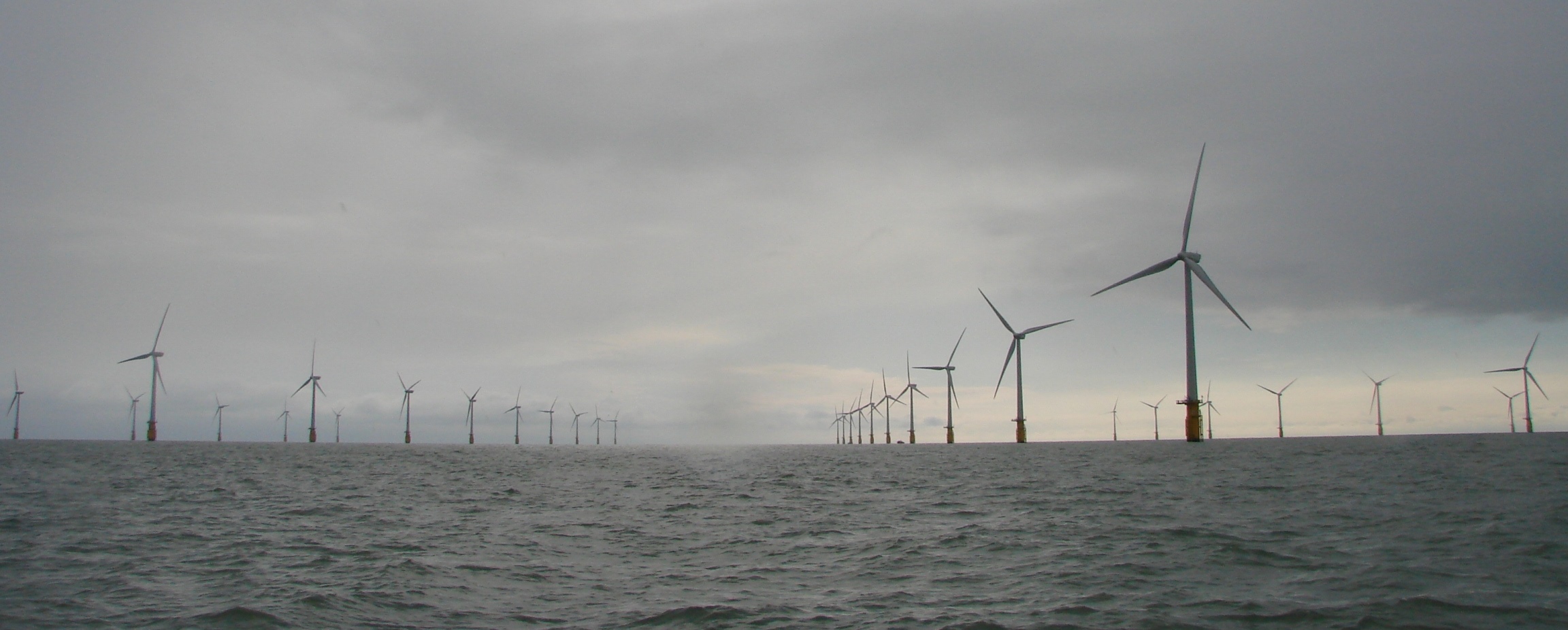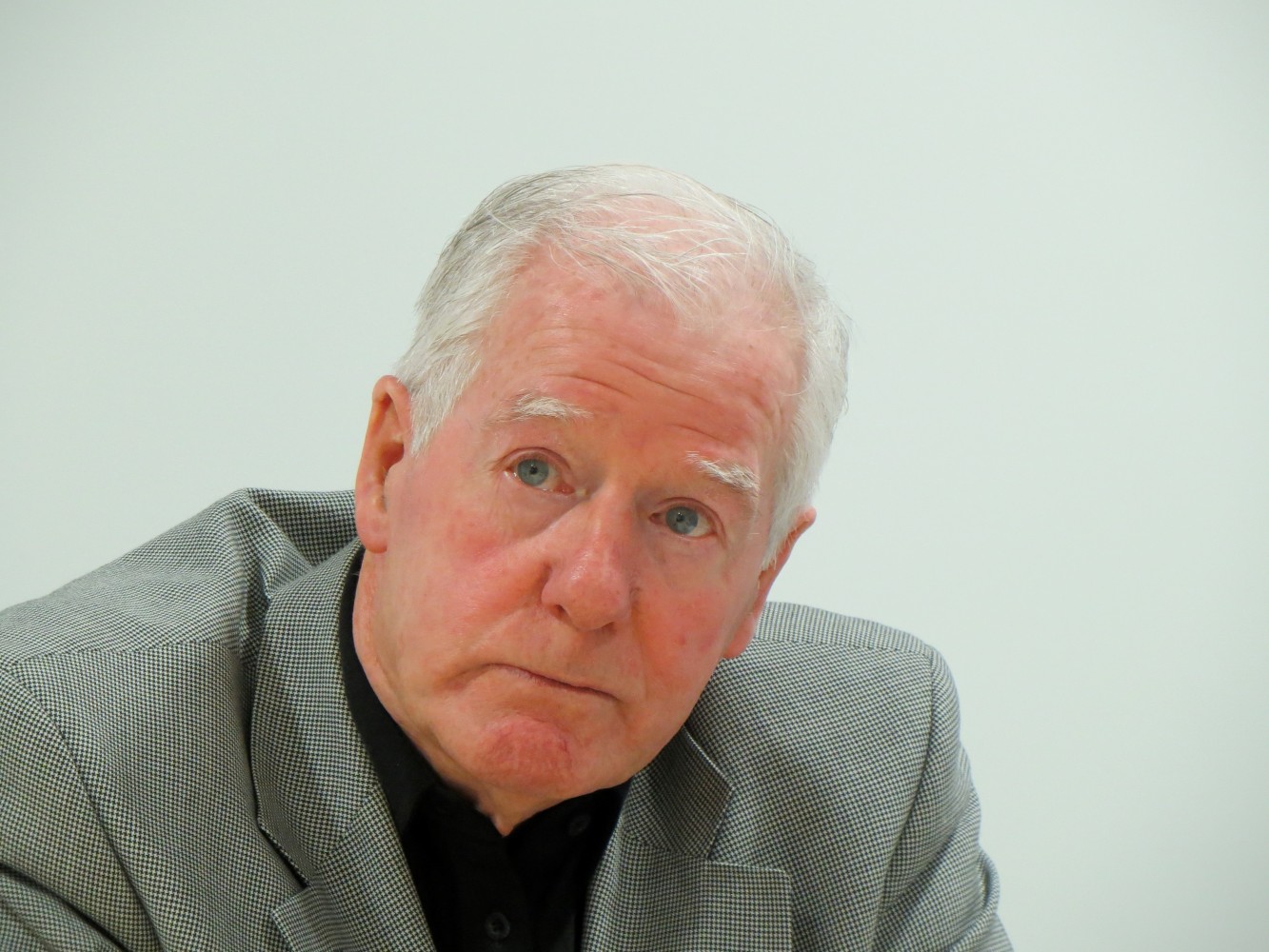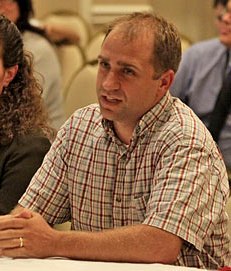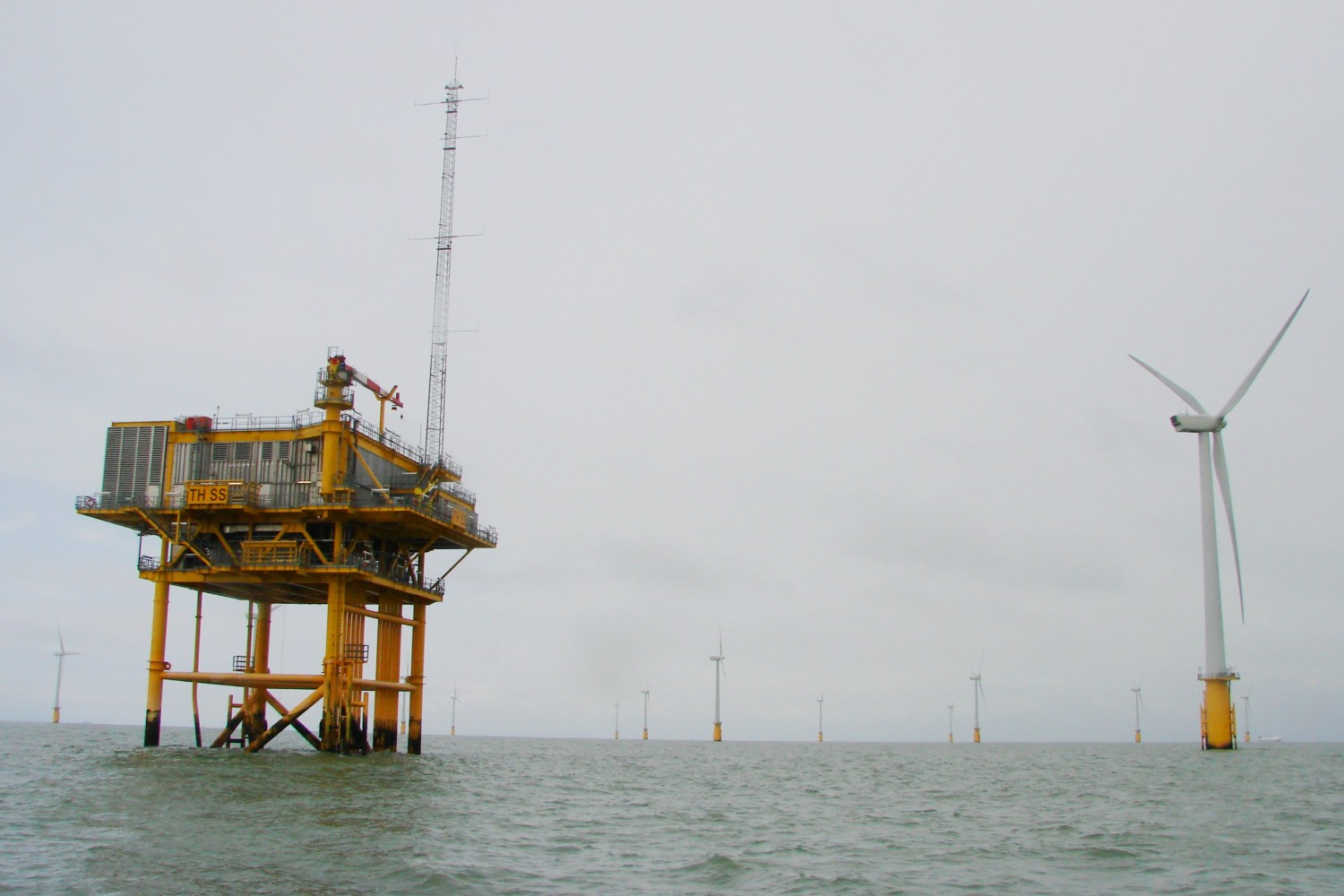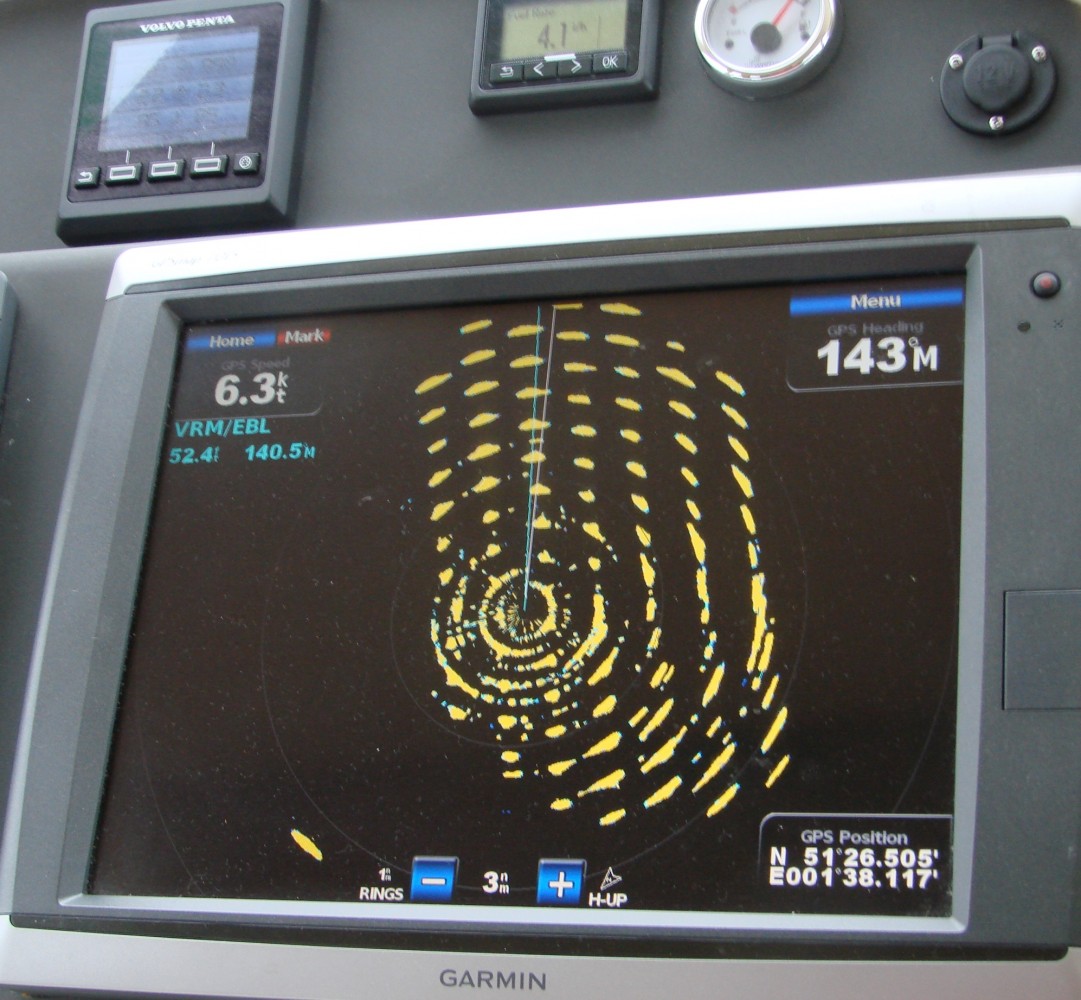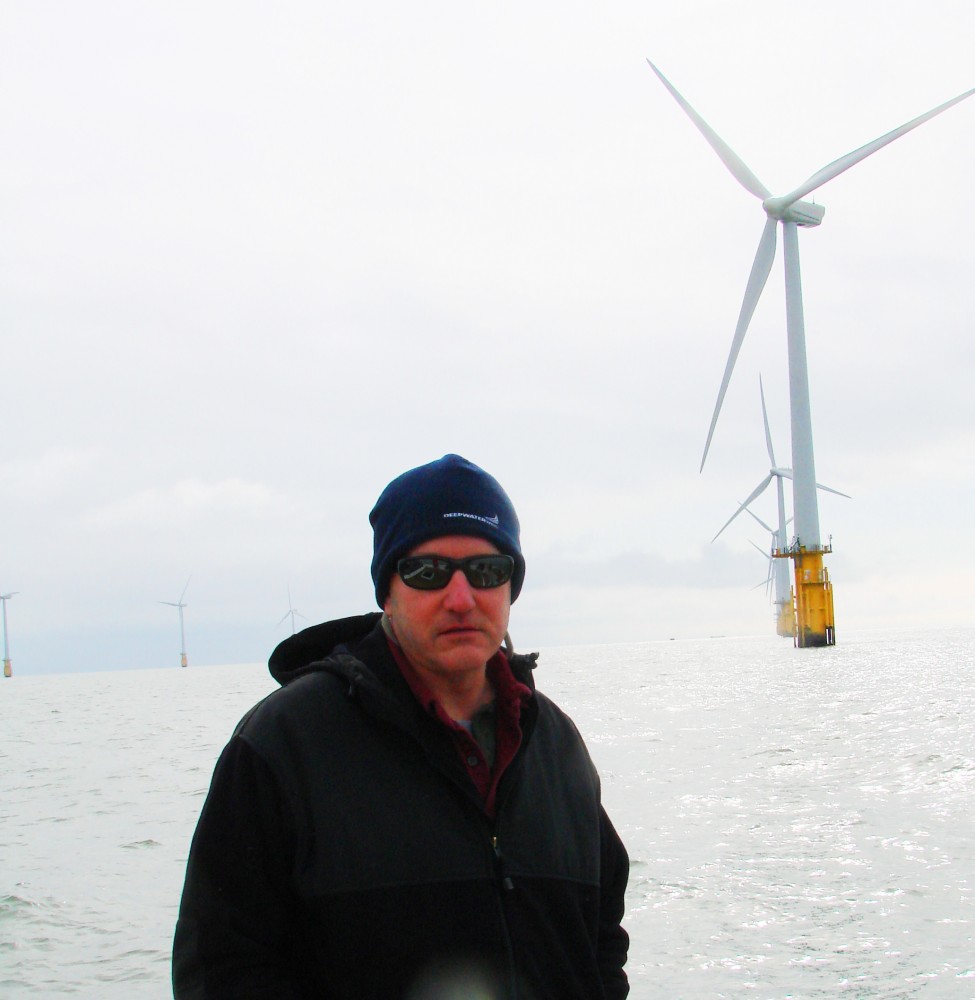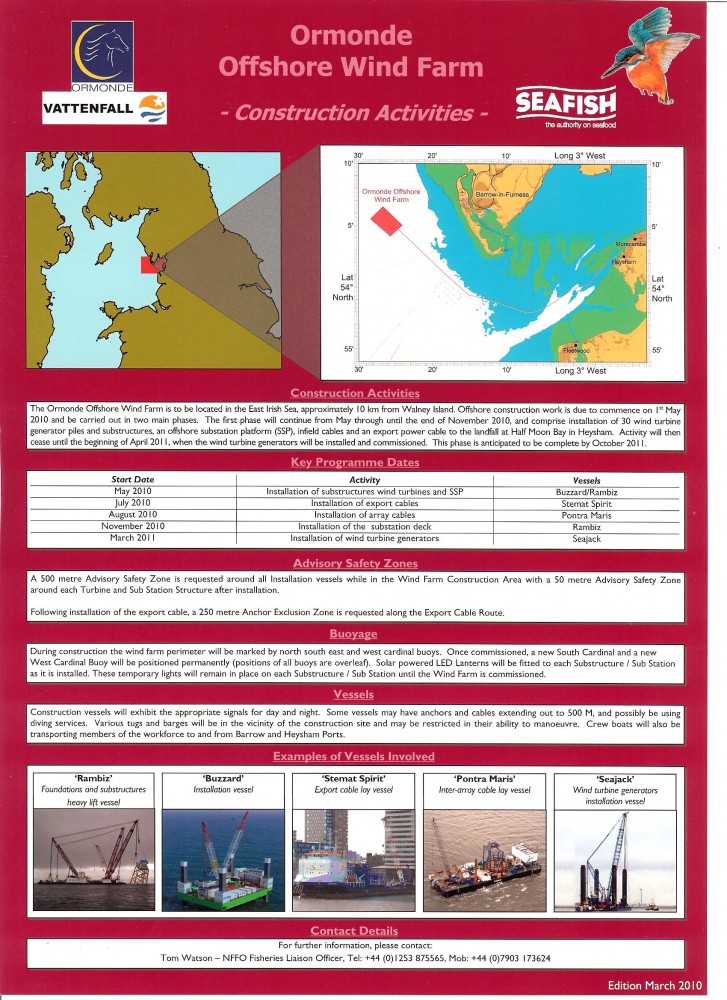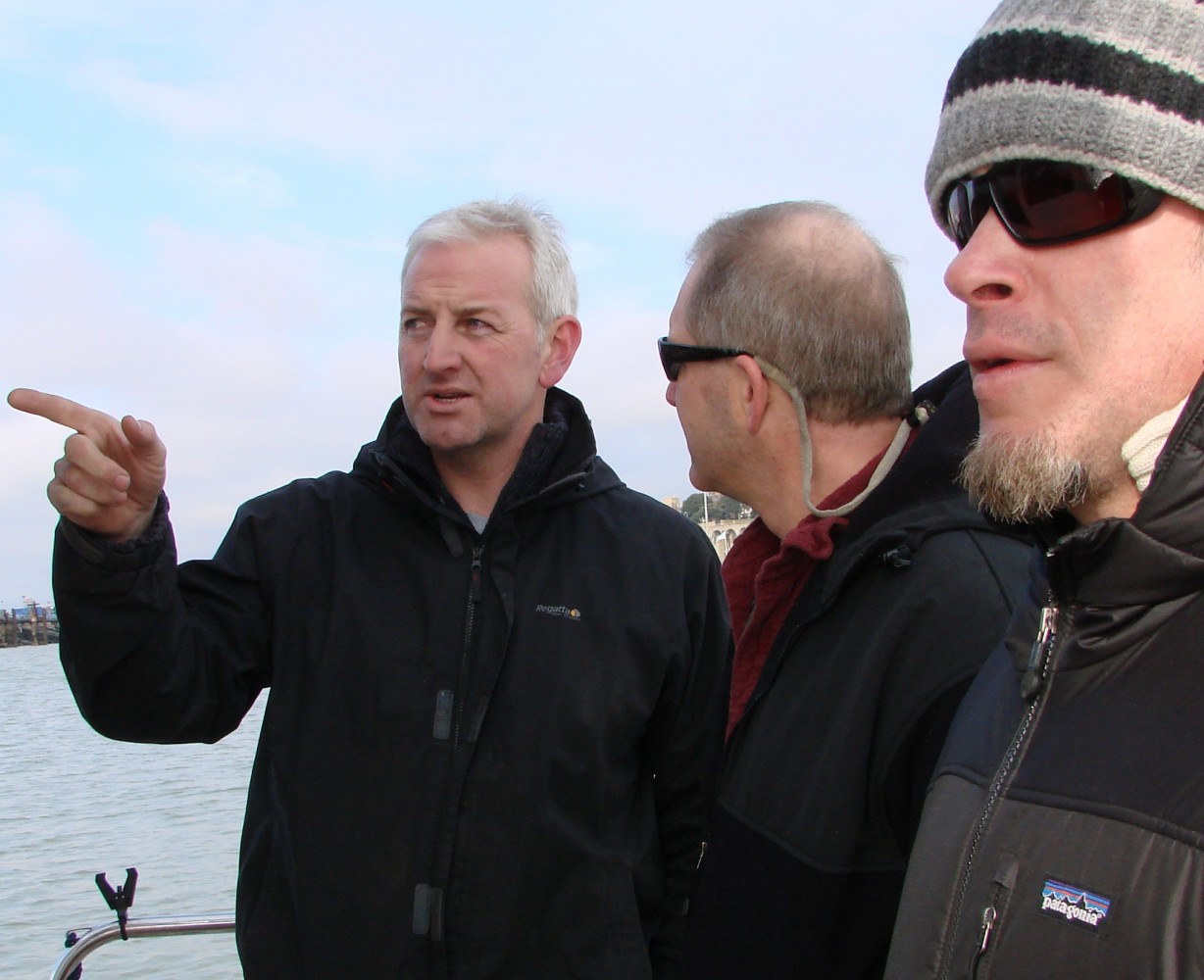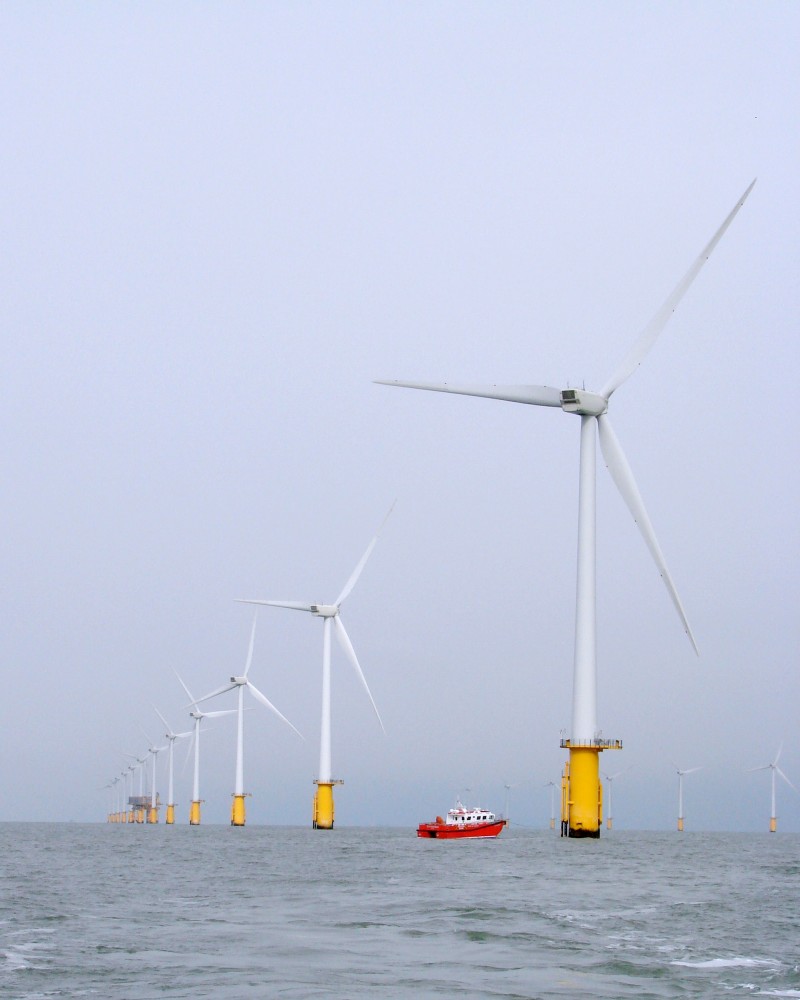Questions and Answers on Fishing Near Offshore Wind Farms
In March 2013, US fishery representatives traveling in UK posed questions from American fishermen about fishing in or near wind farms. British fishery representatives responded with the experience of UK fishermen. Following is one exchange.
Tom Watson serves as a Fishery Liaison Officer for the National Federation of Fishermen’s Organizations (NFFO), an umbrella organization coordinating fishing interests throughout the United Kingdom (UK). Tom is a former fisherman and trade representative. He manages the activities of >270 large and medium sized vessels fishing in the vicinity of five wind farms in the Irish Sea, UK.
Drew Minkiewicz is an attorney with Kelly, Drye & Warren, a Washington, DC law firm representing several major fishing industry clients in the United States, including the Fishery Survival Fund. Drew was lead staff person for the Senate Oceans, Atmosphere, Fisheries and Coast Guard sub-Committee in the process of Magnuson-Stevens Act reauthorization.
Rick Bellavance is a charter fisherman and president of Rhode Island Party & Charter Boat Association. Rick is active in a number of fishery advisory roles and served on the RI Ocean SAMP (Special Area Management Plan). He presently is working as fishery liaison for the Deepwater Wind project off of Block Island, RI.
Questions from Drew Minkiewicz
Drew: What are the real safety issues related to wind farms?
Tom: Nothing different from anywhere else really, it depends on the individual fisherman’s outlook and perspective of what he considers to be a risk, they should be avoided in bad weather and poor sea conditions but in reasonable weather and conditions and as long as the vessel is of good standard and maintenance fishermen, or others, should be able to navigate within the Wind Farm.
Drew: What access does the fishing fleet have to the area?
Tom: During construction the area or footprint of the Wind Farm is buoyed off and there is a request that all vessels stay outside of the construction zone; any vessel that in the interest of its own safety or the safety of others finds it necessary to navigate or transit the construction site should observe the advertised 500 or 1,000 meter Safety Exclusion Zones around the construction vessels and cable layers, (500 meters is the law but with cable layers using a big anchor spread 1,000 meters is requested for additional safety). Once the Farm is commissioned the fishing fleet has free access (needs more discussion on Safety Exclusion Zones).
We ask all vessels for an ADVISORY 50 Meter Safety Exclusion Zone around each Turbine or Sub-Station after installation and this continues after the Farm is commissioned, primarily to protect any underwater fittings at the base of the Turbine. One thing that is very relevant to any discussion about fishing inside the Wind Farm is that some fishermen will enter and some will not and it’s worth noting that that causes a bit of tension between the fishermen themselves. The Wind Farm is also open to any other user of the sea that considers it safe to enter.
Drew: How have Offshore Wind Farms affected the fisheries on the area in a positive or negative way?
Tom: The jury is still out but early findings are encouraging for crab and lobster (there are no Farms in this area on Scallop grounds) the divers servicing the J-tubes and checking on scour reported that there were plenty of crab and lobsters around the Turbine bases (they brought plenty up for their own use) as well as mussels and other crustaceans on the turbine bases, I encouraged a fisherman from Barrow to set his pots inside the Barrow Farm and he reported to me that he had good catches, but asked me not to tell anybody else. There have been surveys carried out which show that young and immature fish are congregating inside the Farm and a survey carried out in Holland showed cod habituating the Farm, most of our Farms have been built on inshore grounds where the main fishing is potting, so more research needs to be done on the offshore Farms. (need to talk about scheme to replace pots that foul Turbines)
Drew: How has the British equivalent of the US Coast Guard responded to the new areas, is search and rescue affected?
Tom: The Marine Coastguard Agency (MCA) have carried out search and rescue operations inside the Wind Farm, they had a few problems with RADAR interference but never reported any serious problems.
Drew: What is the real world effect on radar from these areas?
Tom: Not sure that I understand this as there are no effects, the Royal Air Force initially objected on the grounds that a vessel could ‘hide’ inside the Wind Farm’s overhaul signature and fire a weapon but from what I later heard they had developed a system to overcome this.
Drew: Does anyone fish in and around the areas? What gear-types are logistically restricted by lay-out and design?
Tom: As above, fishermen are free to go inside the Farm, some will some won’t. When talking to them about towed gear we emphasise that they should tow up and down the lanes rather than across the Infield or Inter-Array cables but as we stand at the moment there have been no restriction placed on any type of gear although I discourage any kind of Drift Nets for obvious reasons. For the potters we ask them to use weights rather than anchors but again this needs more open discussion.
Questions from Rick Bellavance
Rick: I have general questions about Commercial and Charter Boat Insurance. We have heard that there are restrictions and limitations in place for insurance. What experiences do UK Fishermen have with their insurance companies?
Tom: This is a question that often arises (mostly to try to boost any compensation), fishermen as well as Charter Boat operators express their fear that the insurance company will either forbid them from entering a Wind Farm or put up their premiums for doing so. No insurance company has placed any restrictions or increased any premiums because of a Wind Farm in the UK., needs more discussion at the meeting but they insurance the vessel for the purpose or the work that you want it for, if it’s legal for you to go inside a Farm they cannot tell you that you can’t, likewise they can’t tell you that you can’t sail because the weather is bad.
Rick: I have many general questions about the position of fisheries liaison throughout Europe. How was that role accepted by industry? Are they typically fishermen or not? Who pays for the position? Is it full time work or…if the person is a fishermen…can he actively fish?
Tom: The Fisher Liaison Officer (FLO) is a member of the developers team who has to make himself / herself available to discuss fishing matters, the Fishing Industry Representative (FIR) should come from the fishing community and from the area where the Farm is to be built, somebody who knows and understands the industry and the local people, has a history in it and is recognized by the community as being able to do the job.
It depends on the person doing the job on how he is accepted, some are OK others not so much, it all depends on him and how much he keeps everybody informed and acts as a go-between. The position is paid by the Wind Farm developer and it’s usually part time but how much work involved (and pay) will depend on the size of the Farm and the amount of fishing interests in the area, best suited to somebody semi-retired. (again more discussion)
Rick: How affective is e-mail for communicating with industry? Do liaisons reach out to fishermen who don’t have e-mail? How? Where does the liaison get information from? Developer? Gov’t Agency? In the field observations?
Tom: I use E-mail to pass bulletins and Notices to Mariners to all of the fishermen who I have E-mail addresses for some of them have E-mail onboard their boat. I also as a back-up post to all of the registered fishermen in the area regular bulletins and Notices to Mariners. I get the information from the developers Marine coordinator who dishes out a daily or regular bulletin.
Rick: Regarding research. Who set the research agenda? Where fishermen part of the process? Were ENGO’s part of the process? Is the fishing community satisfied with the research conducted? Pre-construction and post construction? Was research conducted during construction? Did fishermen help in the research?
Tom: The research agenda is set by the Gov. as part of the license application, consultations with the fishermen through their associations or organizations are held in the early stages and at regular intervals, Environmental Impact Reports are drawn up and made public for comment.
Fisheries surveys, using a local fishing boat are carried out, pre-construction, during construction and post construction.
The industry is generally satisfied with research but is always vocal !!
In the UK the NGO’s may work with fishermen on some aspects but by and large leave them to their own devices.
Rick: Regarding impacts of construction. Has the fishing community found the modeling of impacts to be accurate? Underestimated? Overestimated? IE: effects of noise during construction? Or effects of cable laying operations?
Tom: Very difficult to answer this on a questionnaire it needs a general discussion and reference to the reports that I sent, none of it is an exact science and the impact of any construction is always disturbing and extremely difficult to forecast accurately.
Rick: Any information of current research regarding EMF would be helpful.
Tom: This question should be put to your scientific department, the science is sketchy although Skate and Rays have shown to be the fish most effected but the information is vague.
Rick: I have questions about the fishermen’s overall perception of the process and now that turbines are up and running how do they feel about them.
Tom: There is no doubt that all of the fishermen would be far happier if the Wind Farm was not there.
Rick: Did Industry recognize new and unforeseen opportunities for work outside fishing? If so, what?
Tom: Some of the fishermen sold their boats and took up work on the crew and work boats that service the Wind Farms while other fishermen look to do stand-by and Guard Boat work whenever the opportunity arises, in between fishing.
The quota situation is very bad here so they need other work to survive. (I won’t say anymore on that or I’ll go into a rant against a bloody useless Government)
Rick: Is there a recreational fishery in the UK? How big? Any Charter boats? Is there a market for windfarm scenic tours?
Tom: Yes to all these questions and it’s quite big some of the charter boats do Sea Angling inside the Wind Farm.
Rick: I have general questions about mitigation. What mitigation strategies were selected? Direct Compensation? Others? Was industry satisfied with mitigation? Did Gov’t agencies play a role in mitigation discussions or did the developers work with fishing community directly?
Tom: The first stage of mitigation is generally dealt with by compensation for disturbance and loss of earnings caused during construction and also the employment of the local fishermen (that have boats that are capable) in any work that they can do such as Guard Boat or Stand-by Boat as well as Bird Watch and Mammal Watch.
There is then a community fund set up after construction.
None of the Government Agencies are involved, the developer works directly with the local community.
Do you have questions about fishing near wind farms? Please post your question or concern in the comment field below and we will do our best to find an answer.
